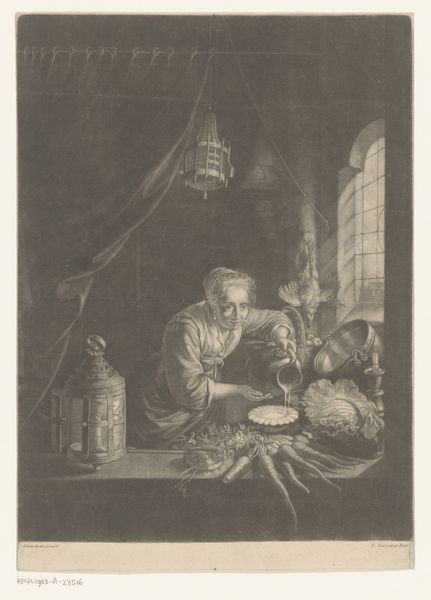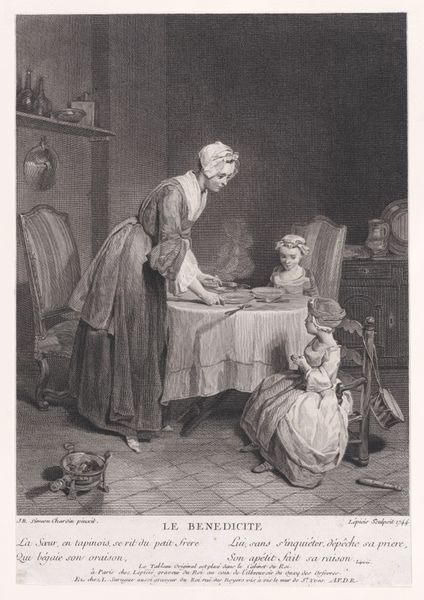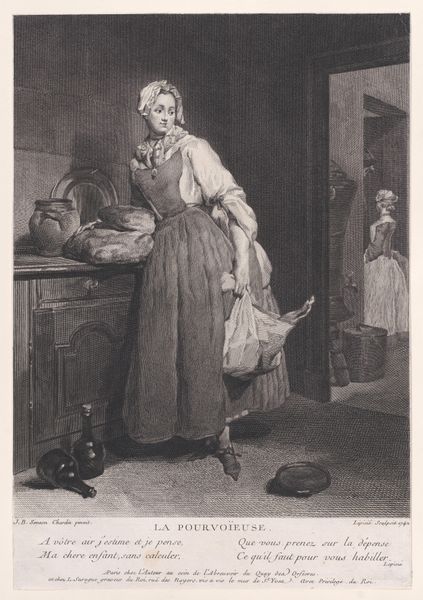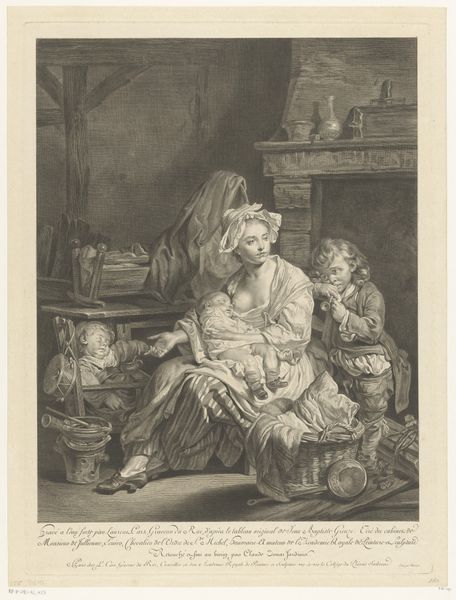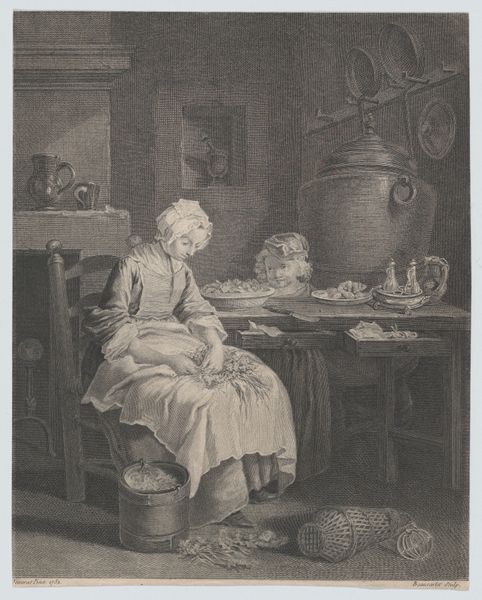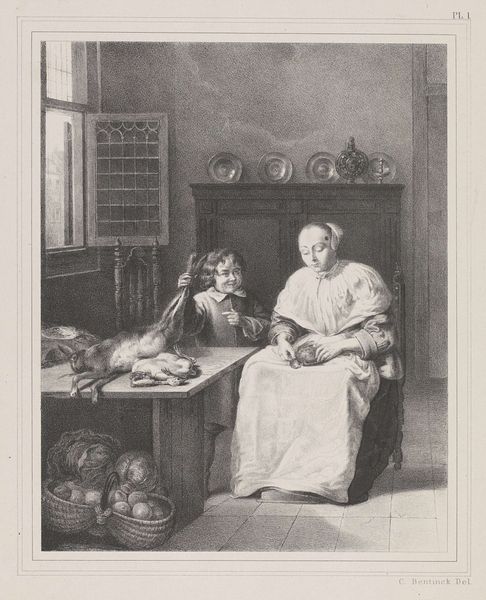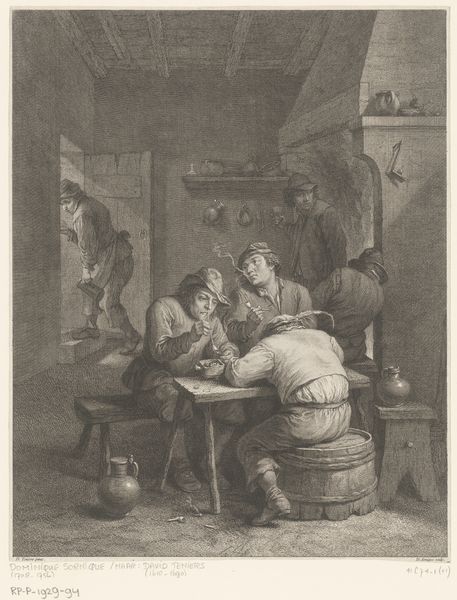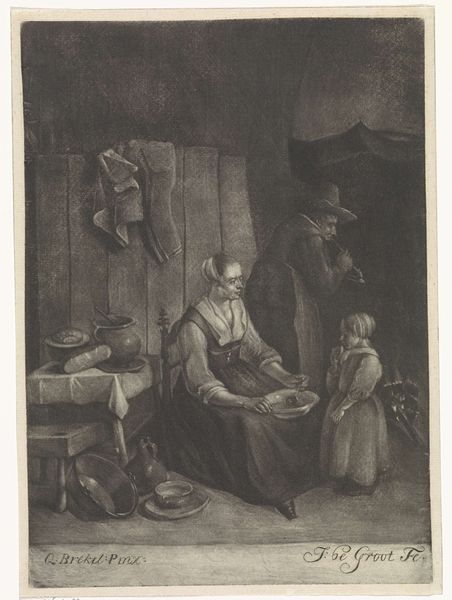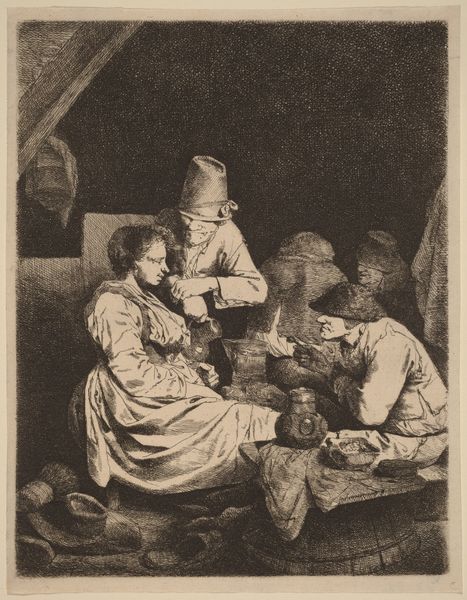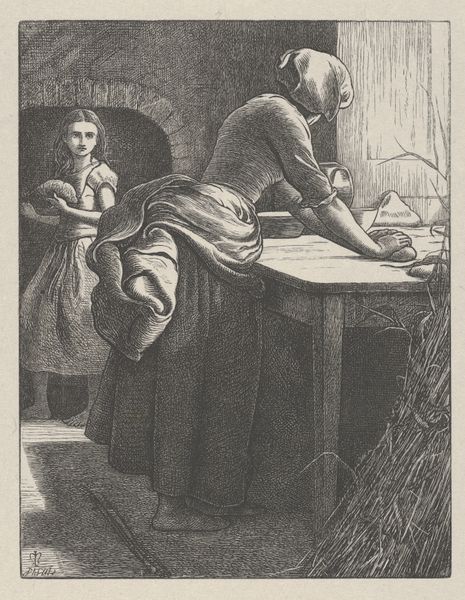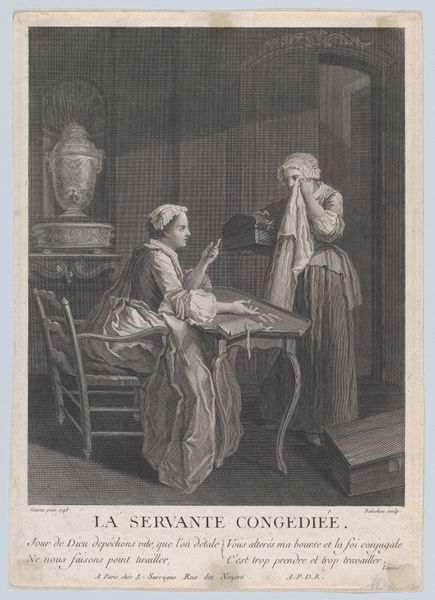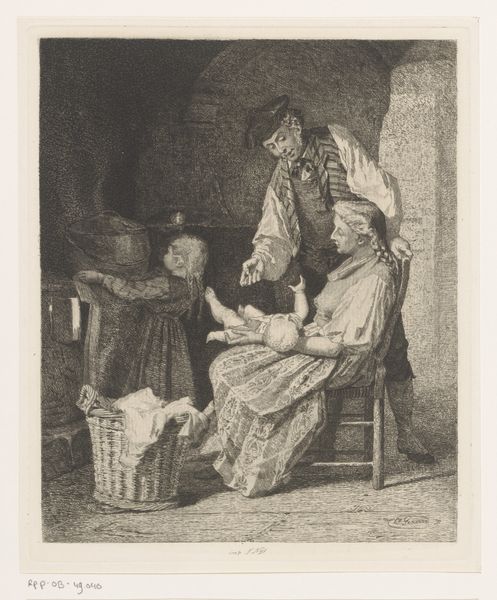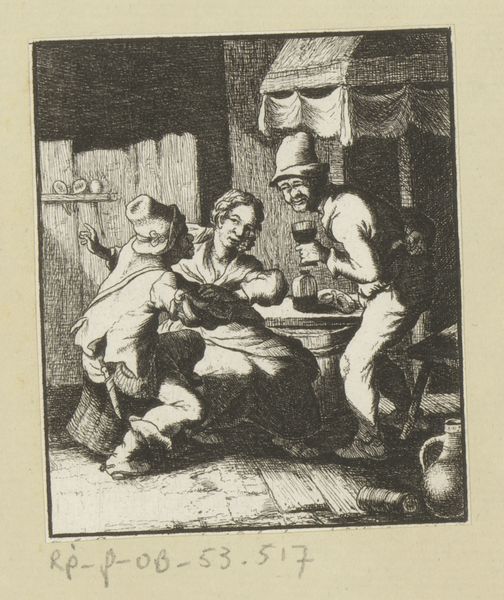
drawing, print, engraving
#
portrait
#
drawing
#
baroque
# print
#
genre-painting
#
engraving
#
rococo
Dimensions: Sheet (trimmed): 14 5/8 × 10 3/16 in. (37.1 × 25.8 cm)
Copyright: Public Domain
Editor: This is "The Peeler," an engraving after Jean-Baptiste-Siméon Chardin, created in 1742 by Bernard Lepicié. It depicts a woman peeling turnips. What strikes me is the stark simplicity; it seems to be more than just an image of daily life. How do you interpret this work? Curator: It’s interesting you pick up on that, the ‘more than’. While seemingly simple, this image resonates with a potent visual vocabulary. Note the placement of the axe in the background. The starkness, juxtaposed with the woman's menial task, introduces an unspoken tension. What feelings arise when you observe these opposing objects so close together? Editor: I notice it creates an unsettling contrast... the domestic versus something potentially violent. Curator: Exactly. Lepicié draws on existing archetypes to convey layers of meaning. Peeling suggests stripping away artifice, exposing a raw essence. Consider the turnips: mundane yet life-sustaining. Is she making our nourishment pure and simple, or creating poison by denying simplicity? This duality, and her tools create a complex iconography far beyond a simple genre scene. What memories or symbols might be activated by her gaze turned away, a potential meditation? Editor: I never thought of the implements having symbolism. This opens up new perspectives, that even mundane items contain cultural meaning. Thank you for enriching the layers and guiding my gaze toward cultural symbols. Curator: And thank you. Examining these works reminds us that what we perceive as ordinary often holds extraordinary depths.
Comments
No comments
Be the first to comment and join the conversation on the ultimate creative platform.
